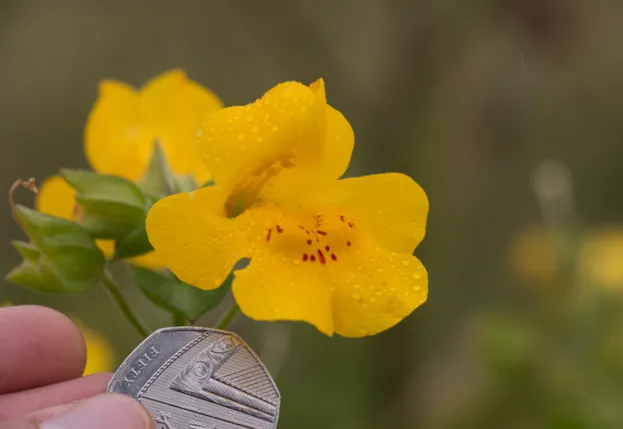The Shetland monkeyflower is a new species © Mario Vallejo-Marin
A recently discovered species of monkeyflower has amazed and excited researchers.
The ‘Shetland monkeyflower’ (its current, informal moniker) was noted as larger than other monkeyflower species.
“Since the beginning, the plants seemed to have some unusual features,” says Dr Mario Vallejo-Marin from the University of Stirling.

The flower of the Shetland monkeyflower is not much larger than 50p coin © Mario Vallejo-Marin
Researchers analysed the flower’s genome size in more detail and found something unexpected.
“The unusual plants had twice the chromosomes they should!” says Vallejo-Marin.
Polyploidism (more than one set of chromosones) is not uncommon in plants and can be found in many crops, including coffee and potatoes.
However, this usually occurs through hybridisation between different species and in the Shetland monkeyflower case, both the parent plants are of the same species (Mimulus guttatus).
The polyploidism of the Shetland monkeyflower is significant because the transformation has taken place within the last 200 years, "an instant in evolutionary terms" according to Vallejo-Marin.
"It is really exciting to witness the emergence of new species as we can study the process of speciation, which fascinated Darwin, just as it happens."

The Shetland monkeyflower was discovered by chance on a roadside during fieldwork © Mario Vallejo-Marin
The Shetland monkeyflower was discovered on a roadside south of Lerwick while the researchers were conducting fieldwork to compare different populations of monkeyflower.
Each tiny flower is only slightly larger than a 50p piece and the new species has not yet been described taxonomically.